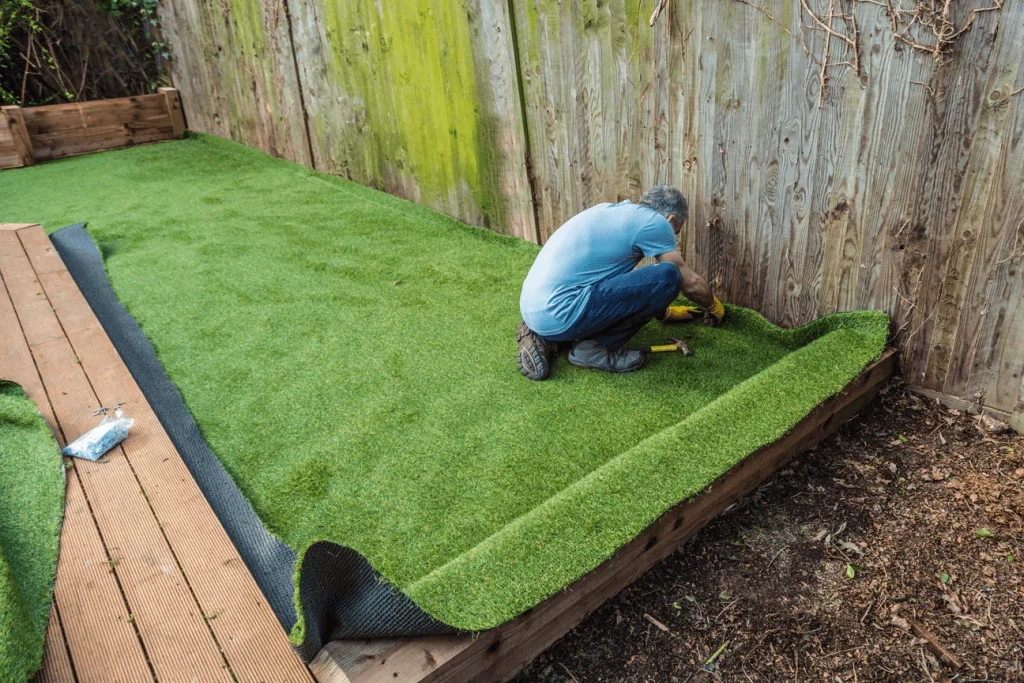Artificial grass has become an increasingly popular option for homeowners in Tampa, offering a low-maintenance alternative to natural grass. While it’s true that synthetic turf requires less care than traditional lawns, there are still several upkeep practices that can help ensure your grass stays lush and attractive for years. Here, we’ll look at five common mistakes people make with their artificial grass and provide expert advice on how to avoid these issues.
Ignoring Regular Cleaning
One of the most frequent mistakes people make with artificial grass is assuming it doesn’t need cleaning. Although synthetic turf is far more resistant to dirt and debris than natural grass, it can still accumulate dust, leaves, and pet waste over time. Neglecting regular cleaning can lead to an unkempt appearance and even unpleasant odors.
How to avoid it: Regularly brush your artificial grass with a soft-bristled broom or rake to remove debris. A gentle rinse with a garden hose can also help wash away dirt and freshen the turf. If you have pets, promptly clean up after them to keep the surface sanitary and odor-free.
Allowing Heavy Items to Stay in One Spot for Too Long
Artificial grass is durable but can still be affected by heavy objects like outdoor furniture, grills, or large planters. Leaving these items in one spot for too long can flatten the turf and cause noticeable indentations that may be difficult to repair.
How to avoid it: To prevent this, try to rearrange furniture and other heavy items occasionally. This allows the turf to recover from any compression. If you notice flattened areas, brushing the grass in the opposite direction can help restore its natural appearance.
Using Harsh Chemicals for Cleaning
Another common mistake is using harsh chemicals or cleaners that are too abrasive for artificial grass. Products like bleach or harsh detergents can damage the synthetic fibers, causing them to weaken or fade over time.
How to avoid it: Stick to mild, eco-friendly cleaning solutions or simply use water to keep your turf clean. A mixture of water and a small amount of dish soap works wonders for tackling spills and stains without harming the turf. When in doubt, check with your installer for specific recommendations on safe cleaning products.
Not Addressing Drainage Issues
Proper drainage is one of the factors that make artificial grass low-maintenance, but ignoring drainage problems can lead to long-term issues. Water pooling on the surface or slow drainage can promote the growth of mold and mildew, which can be damaging and unsightly.
How to avoid it: Ensure that your synthetic turf is installed with the appropriate drainage system to prevent water from sitting on the surface. If you notice any pooling, it may be a sign that the drainage needs attention. Regularly check the drainage system and clear any blockages to keep the turf in good condition.
Neglecting Routine Inspections
Many homeowners make the mistake of assuming their artificial grass doesn’t require inspection because it’s synthetic. However, without routine checks, minor issues can become more significant problems over time, such as seams coming apart or the turf separating from the edges.
How to avoid it: Schedule regular inspections of your grass to catch any issues early. Look for signs of wear and tear, and if you spot any areas of concern, address them promptly. Hiring a professional for periodic inspections can also help extend the life of your synthetic turf and ensure everything is in top shape.
Artificial grass is an excellent investment for Tampa homeowners seeking a low-maintenance, attractive lawn. However, avoiding common upkeep mistakes is essential to maximizing its lifespan and appearance. By incorporating regular cleaning, mindful furniture placement, safe cleaning products, proper drainage, and routine inspections, you can enjoy your artificial turf for many years. For more expert advice on maintaining artificial grass, visit Turf Pro Synthetics and ensure your turf stays in top shape.

